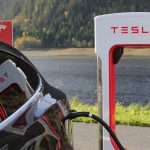Advanced Materials has published an article titled “Highly‐Aligned All‐Fiber Actuator with Asymmetric Photothermal‐Humidity Response and Autonomous Perceptivity,” which explores the development of an innovative robotic membrane. This membrane, referred to as an asymmetric highly aligned all‐fiber membrane (HAFM), incorporates advanced materials engineering to achieve unique actuation properties. By leveraging the hierarchical micro-nano structure of the HAFM, the research team has demonstrated various applications, including programmable micromanipulators and autonomous environmental interactions in robots. The study underscores the potential of these fibers in advancing self-powered robotic systems.
Novel Fiber Architecture
The HAFM exhibits a grape-like nanosphere-assembled microfiber structure, characterized by a specific surface area of 13.6 m² g⁻¹ and impressive mechanical toughness. The tensile stress of the membrane reaches 5.5 MPa, while its fracture toughness is measured at 798 KJ m⁻³. These characteristics enable the membrane to perform efficient asymmetric actuation in response to both photothermal and humidity stimuli, achieving a bending curvature up to approximately 7.23 cm⁻¹ and a fast response rate of 0.60 cm⁻¹ s⁻¹.
The structural composition of the HAFM comprises two distinct layers: a moisture-responsive layer enhanced by a metal-organic framework (MOF) and a photothermal-responsive layer improved with MXene. This bi-layer configuration allows the membrane to actuate under varying environmental conditions, facilitating its application in diverse robotic functions.
Applications in Robotics
By manipulating fiber alignment and adjusting the bi-layer thickness ratio, the research team has demonstrated the versatility of the HAFM in creating different types of robotic systems. These include micromanipulators, automatic walking robots, and plant robots with programmable structures. The integration of the autonomous triboelectric effect, induced by photothermal-moisture actuation, empowers these robots with self-powered information perception capabilities. This enables them to detect material type, object moisture, and temperature, thus broadening the scope of robotic-environment interactions.
Comparing this development to previous advancements, earlier research primarily focused on achieving environmental responsiveness in soft robots through simpler material compositions and less sophisticated structural designs. While these earlier models provided basic actuation and sensory functions, they lacked the hierarchical complexity and dual-stimuli responsiveness seen in the HAFM.
In recent years, there has been a growing interest in enhancing the autonomy and sensory capabilities of soft robots. Previous iterations relied heavily on external power sources and limited responsive ranges. The HAFM represents a significant improvement in this context, offering a self-powered solution with advanced actuation and perception abilities, demonstrating the evolutionary progress in this field.
The potential applications of the HAFM extend beyond traditional robotics, opening possibilities in fields such as biomedical devices, environmental monitoring, and adaptive architecture. By providing a self-powered, highly responsive material, this research lays the groundwork for future innovations that can seamlessly integrate with and adapt to their environments.
For readers interested in the latest advancements in material science and robotics, the insights gained from this study on the HAFM provide valuable knowledge. Understanding how the interplay between material structure and environmental stimuli can lead to self-powered, responsive systems is crucial for developing next-generation robotic technologies.
- An asymmetric highly aligned all‐fiber membrane exhibits hierarchical micro‐nano structure.
- Shows dual-directional thermal-induced moisture-responsive actuation with fast response rates.
- Enables programmable micromanipulators, walking robots, and plant robots with autonomous perceptivity.










